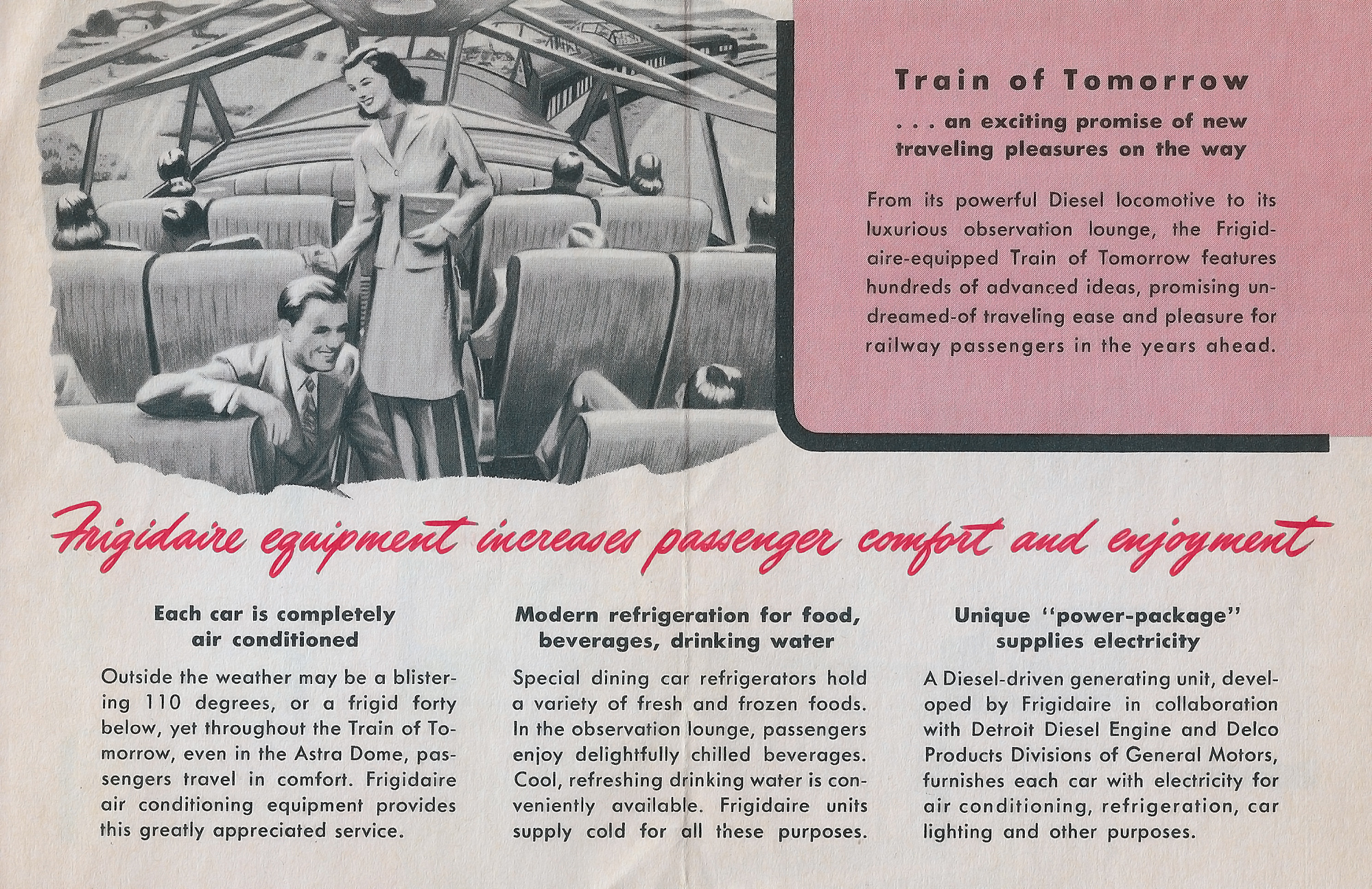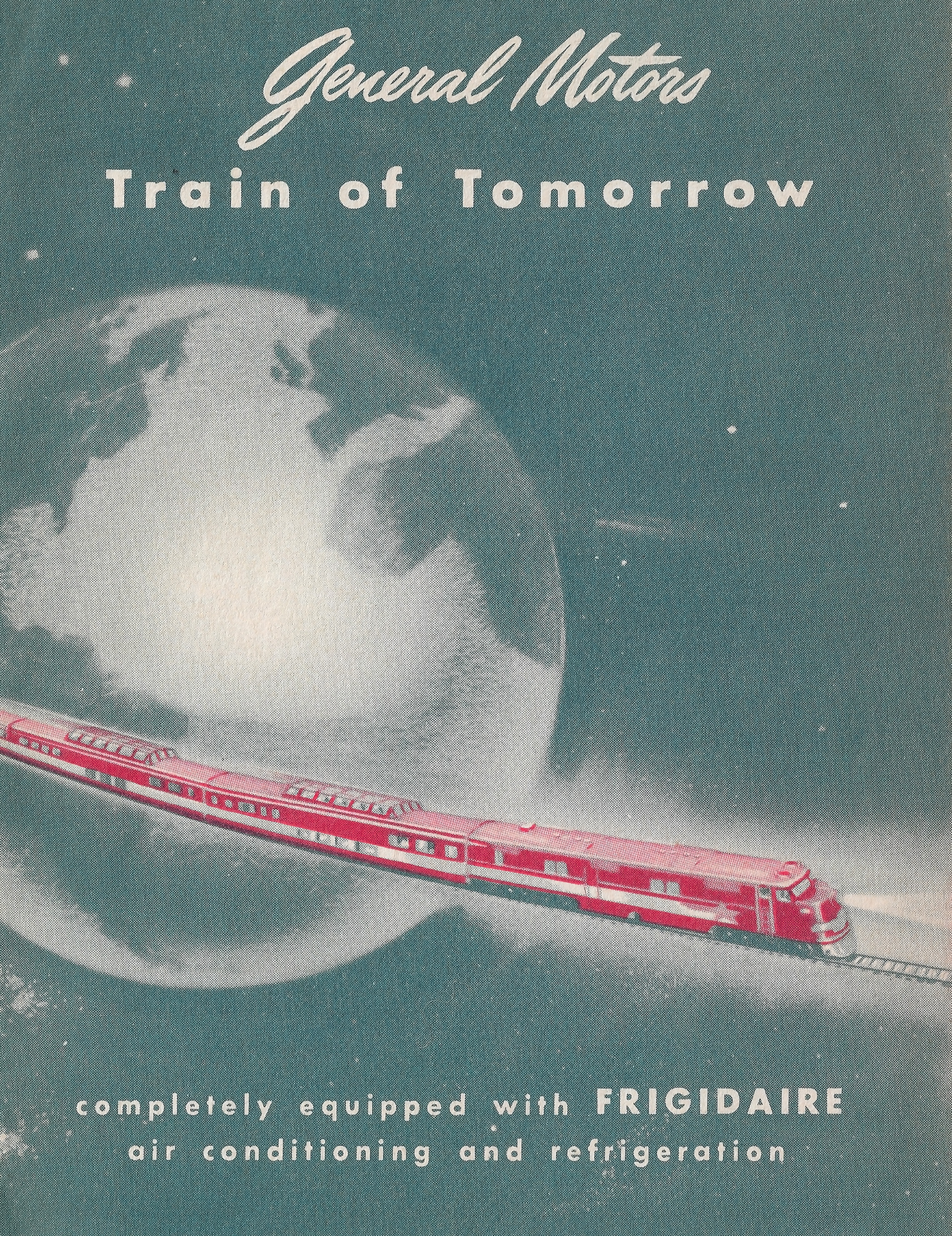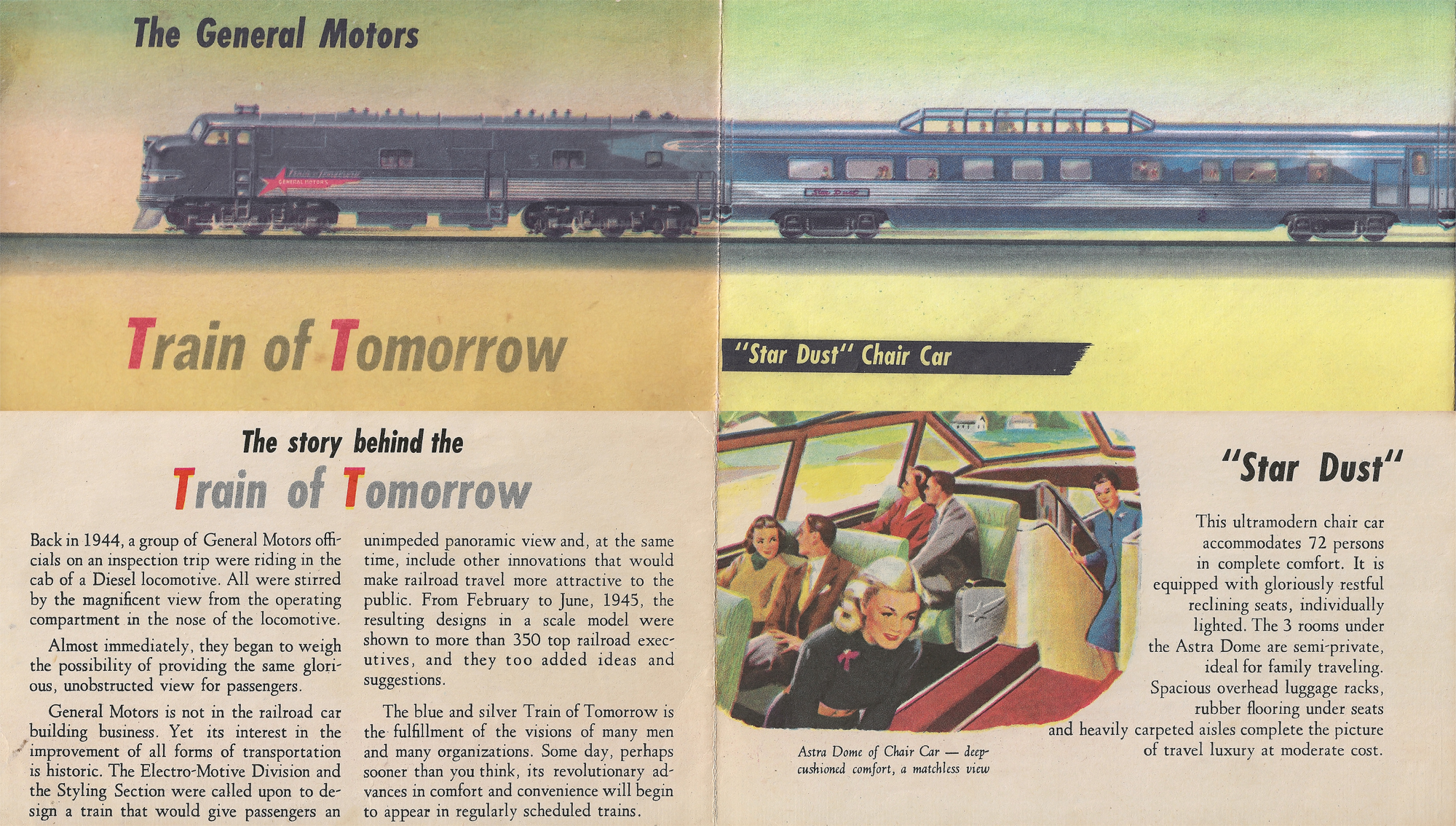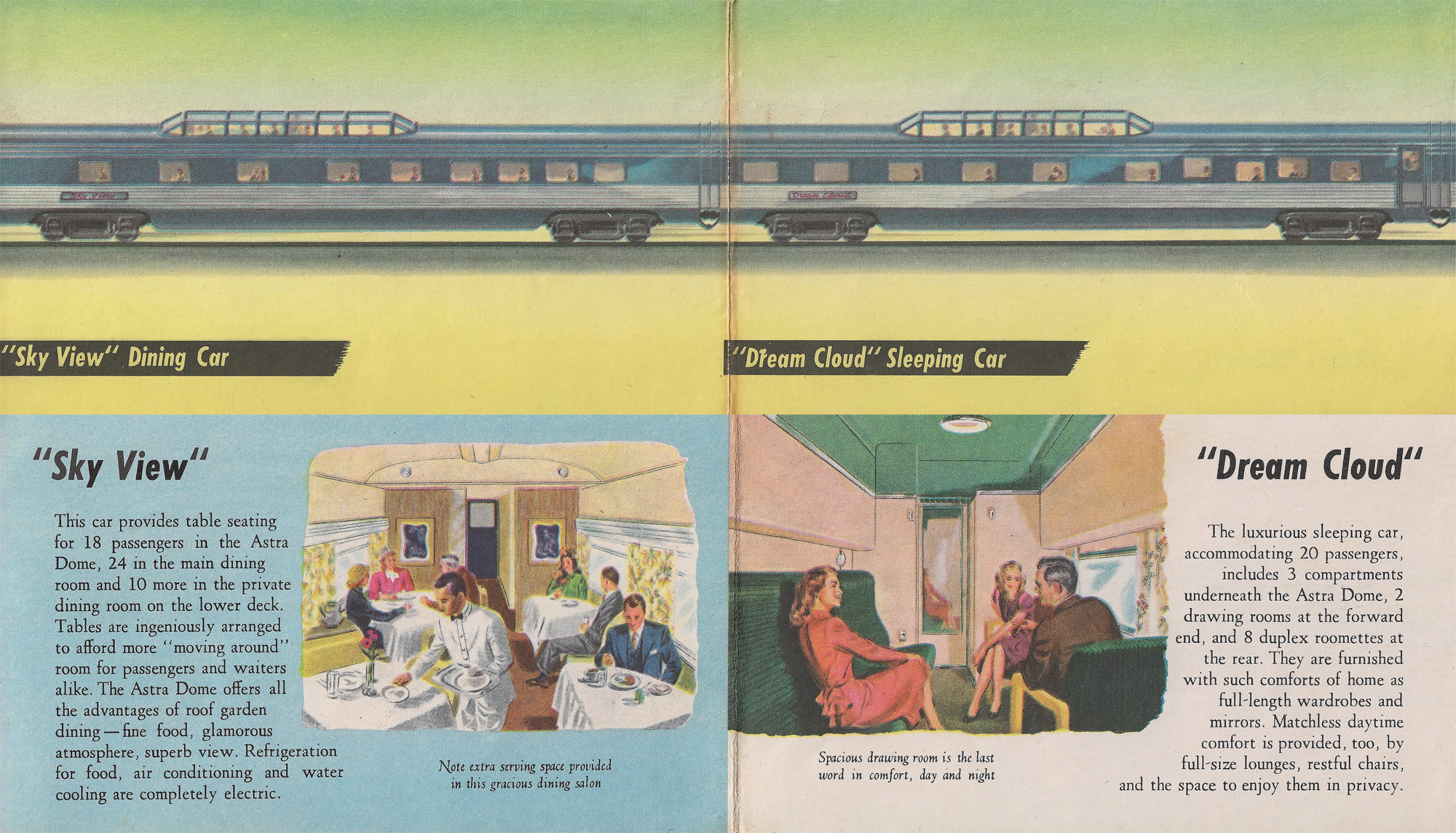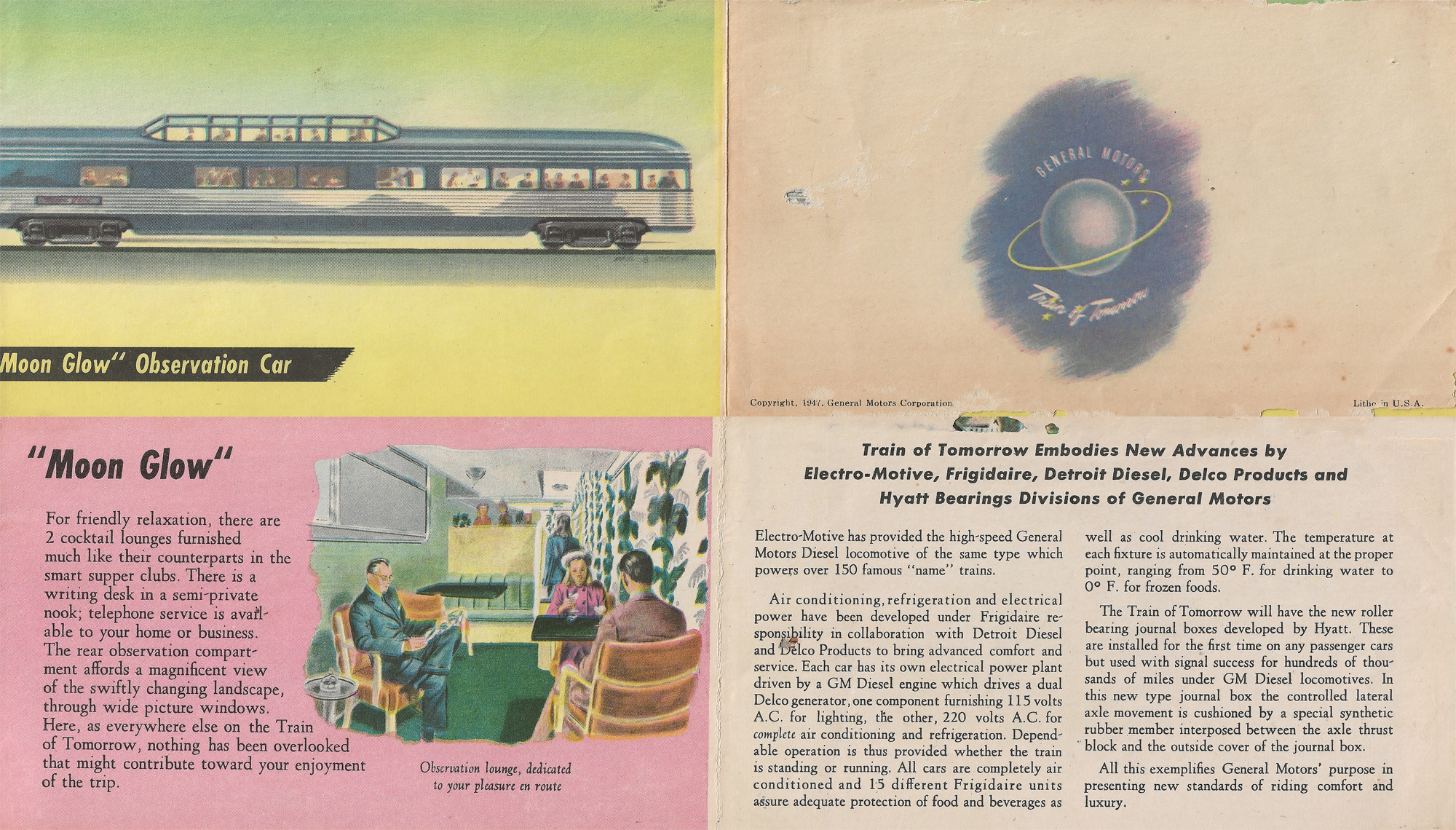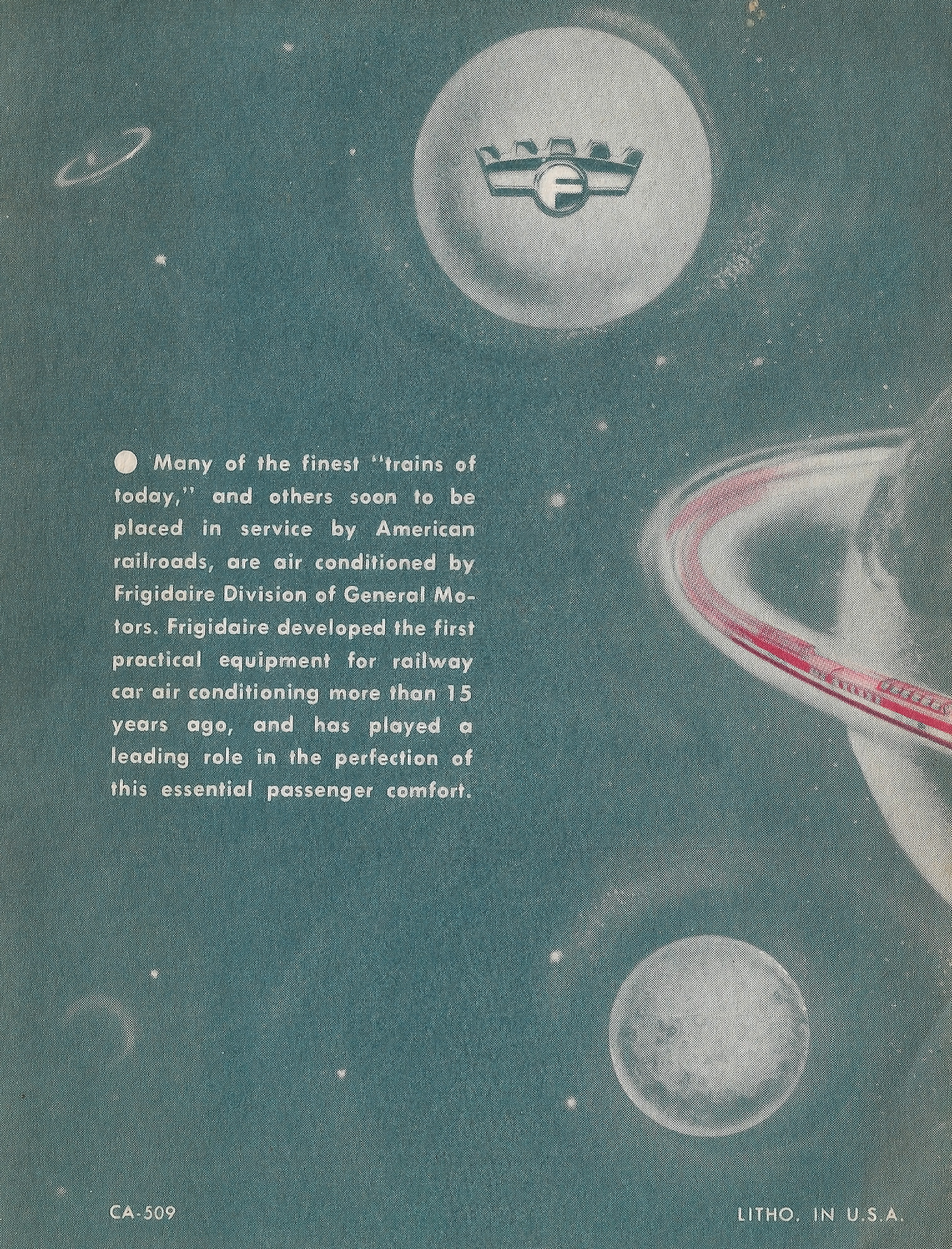"Train Of Tomorrow" (General Motors): A 1947 Concept
Last revised: August 25, 2024
By: Adam Burns
The "Train of Tomorrow" was a General Motors concept trainset, built in conjunction with Pullman-Standard, intended to showcase the latest in rail travel luxuries and accommodations in the post-World War II era. The train's prominent feature was its four, Pullman-built "Astra-Domes."
These cars were not an entirely new concept as the Chicago, Burlington & Quincy had already been operating its custom-designed Vista Domes for a few years by the time the "Train of Tomorrow" debuted in the spring of 1947.
However, their barnstorming tour around the nation, and great publicity, convinced railroads to invest heavily in the dome car concept. Through the latter 1950s there were a several iterations of the dome car manufactured, especially for western railroads.
In 1950, the entire trainset, led by an E7A, was purchased by Union Pacific, a railroad that fully embraced the dome. The train subsequently went to work in the Pacific Northwest for nearly a decade until the four cars were slowly retired in the early 1960s. Today, one of the four survives, Moon Glow, as well as the E7A.
Photos
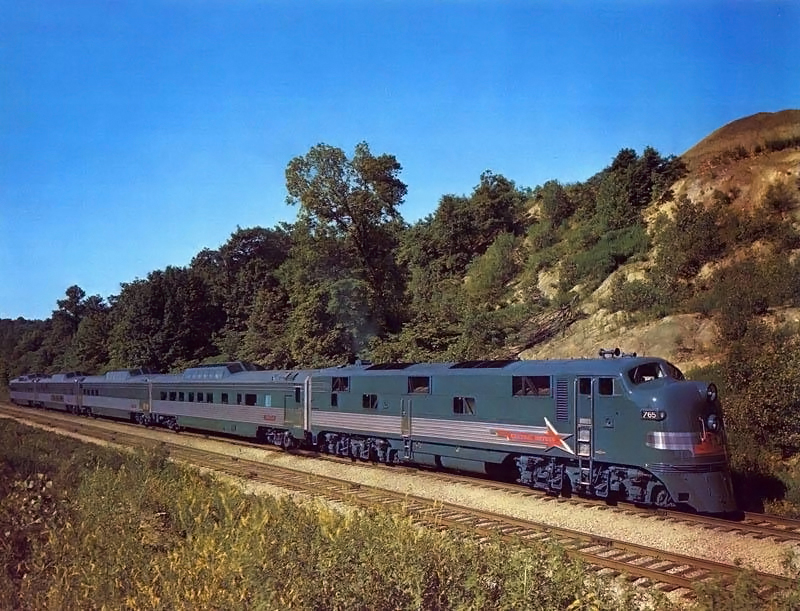 In 1947 General Motors ordered four domes (the "Moon Glow" lounge, "Sky View" diner, "Star Dust" coach, and "Dream Cloud" sleeper) from Pullman for a new publicity train known as the "Train Of Tomorrow." The idea was meant to showcase the latest in rail travel accommodations following the war. After touring cross-country the equipment was purchased by Union Pacific. Today, "Moon Glow" is the only surviving piece from the consist (the other cars were scrapped in the 1960s and E7A #765, renumbered as 988 under UP, was traded-in to EMD in 1963 for E9A #912).
In 1947 General Motors ordered four domes (the "Moon Glow" lounge, "Sky View" diner, "Star Dust" coach, and "Dream Cloud" sleeper) from Pullman for a new publicity train known as the "Train Of Tomorrow." The idea was meant to showcase the latest in rail travel accommodations following the war. After touring cross-country the equipment was purchased by Union Pacific. Today, "Moon Glow" is the only surviving piece from the consist (the other cars were scrapped in the 1960s and E7A #765, renumbered as 988 under UP, was traded-in to EMD in 1963 for E9A #912).History
As the nation settled into peacetime, railroads remained hopeful rail travel would remain strong following the record-breaking passenger miles experienced during World War II. In his book, "America's Fighting Railroads," author Don DeNevi notes the industry's peak year during the war was 1942 when it handled 53 billion passenger miles alone (this figure is derived from the total number of passengers multiplied by distance carried).
While troop trains could partially explain such astronomical numbers, they still only accounted for 2 million passenger miles monthly in 1942. Another reason - aside from the travel demands inherently during such a global conflict - was the relatively new streamliner concept that had swept the nation in the mid-1930s.
Prior to the United States' involvement in the war, many of the large Class 1 railroads began experimenting with early streamliners following the successful demonstrations of Union Pacific's M-10000 and Burlington's Pioneer Zephyr. Both of these railroads quickly put entire fleets of semi-articulated trainsets into service while other railroads launched their own; names like the Hiawatha, Mercury, Comet, and Silver Meteor.
In his book, "Streamliners: Locomotives And Trains In The Age Of Speed And Tyle," author Brian Solomon notes Southern Pacific's early Daylights of 1937 carried some 62,899 passengers during its first three months in service, average an incredible 342 passengers daily in each direction. By the end of 1937, the Daylights were carrying the greatest number of passengers in the nation for a single-section train.
Concept
Other railroads were experiencing similarly strong numbers with their early streamliners. The trains were colorful, first-class, and fast; a stark contrast to the often dull, outwardly dirty, and utilitarian consists which defined early 20th century rail travel.
After the war, the next big thing in rail travel was the dome car. It is said the idea was conceived by Vice President of Electro-Motive Cyrus R. Osborne.
In their book, "Streamliners: History Of A Railroad Icon," authors Mike Schafer and Joe Welsh note that while riding in the cab of a Rio Grande FT at the head-end of a freight train passing through Colorado's Glenwood Canyon in 1944, Osborne stated how wonderful such a view would be from a passenger car that afforded guests an unparalleled, 360-degree view of the surrounding landscape.
He also believed there would be great demand for such an accommodation, stating passengers would pay "$500 to see what the engineer sees" according to "The Art Of The Streamliner" written by Bob Johnson, Joe Welsh, and Mike Schafer.
After arriving in Salt Lake City, Osborn drew a rough sketch of a car featuring an upper-level dome solarium. He then showed his concept to top management at General Motors and friend Ralph Budd, president of the Chicago, Burlington & Quincy.
Both Budd and GM were impressed and excited about the idea and Burlington shop forces in Aurora, Illinois wasted little time in fabricating a prototype. Using a Budd-built stainless-steel coach originally constructed in 1940 for the Ak-Sar-Ben Zephyr, the "Vista-Dome" dome-coach Silver Alchemy emerged from Aurora in June, 1945. The CB&Q fielded the car throughout its Zephyr fleet and it was an immediate hit with the public. The Burlington instantly ordered a fleet of 40 Vista Domes from Budd.
Development
Next, General Motors conceived a post World War II streamliner prototype to showcase its latest passenger diesel leading a short train of dome cars in an effort to convince the public that railroads remained the best method of intercity travel. Thus was born the "Train of Tomorrow."
However, as Brian Solomon notes in his book, "Streamliners: Locomotives And Trains In The Age Of Speed And Style," GM had no interest in building such a concept itself, or even entering the passenger car business. Instead, it teamed up with Pullman-Standard which signed on to construct the cars.
In what were dubbed "Astra Domes," Pullman built four cars featuring different configurations, a standard coach, a full diner, sleeper, and finally an observation lounge.
Booklet
As featured in the above booklet and other original illustrations showcased here, General Motors spared no expense advertising the "Train of Tomorrow" and highlighted the train extensively. The company had this to say:
"General Motors is not in the railroad car building business. Yet its interest in the improvement of all forms of transportation is historic. The Electro-Motive Division and the Styling Section were called upon to design a train that would give passengers an unimpeded view and, at the same time, include other innovations that would make railroad travel more attractive to the public.
From February to June, 1945 the resulting designs in a scale model were shown to more than 350 top railroad executives, and they too added ideas and suggestions.
The blue and silver Train of Tomorrow is the fulfillment of the visions of many men and many organizations. Some day, perhaps sooner than you think, its revolutionary advances in comfort and convenience will begin to appear in regularly scheduled trains.
Air conditioning, refrigeration, and electrical power have been developed under Frigidaire responsibility in collaboration with Detroit Diesel and Delco Products to bring advanced comfort and service.
Each car has its own electrical power plant driven by a GM Diesel engine which drives a dual Delco generator, one component furnishing 115 volts A.C. for lighting, the other, 220 volts A.C. for complete air conditioning and refrigeration.
Dependable operation is thus provided whether the train is standing or running. All cars are completely air conditioned and 15 different Frigidaire units assure adequate protection of food and beverages as well as cool drinking water.
The temperature at each fixture is automatically maintained at the proper point, ranging from 50° F. for drinking water to 0° F. for frozen foods.
The Train of Tomorrow will have the new roller bearing journal boxes developed by Hyatt. These are installed for the first time on any passenger cars but used with signal success for hundreds of thousands of miles under GM Diesel locomotives.
In this new type journal box the controlled lateral axle movement is cushioned by a special synthetic rubber member interposed between the axle thrust block and the outside cover of the journal box. All of this exemplifies General Motors' purpose in presenting new standards of riding comfort and luxury."
EMD E7A #765
At the time of the Train of Tomorrow's development, the E7 was Electro-Motive latest passenger locomotive. A total of 428 "A" units and 82 "B" units were produced between 1945-1949. They were equipped with A1A-A1A trucks and offered 2,000 horsepower per locomotive.
EMD built locomotive #765 for the Train of Tomorrow. It was ultimately sold to Union Pacific where it became #988. The unit was later traded back to EMD in 1963 for E9A #912. According to General Motors at the time:
"Electro-Motive has provided the high-speed General Motors Diesel locomotive of the same type which powers over 150 famous 'name' trains."
Chair Car "Star Dust"
"This ultramodern chair car (coach) accommodates 72 persons in complete comfort. It is equipped with gloriously restful reclining seats, individually lighted. The 3 rooms under the Astra Dome are semi-private, ideal for family traveling.
Spacious overhead luggage racks, rubber flooring under seats and heavily carpeted aisles complete the picture of travel luxury at moderate cost."
Dining Car "Sky View"
"This car provides table seating for 18 passengers in the Astra Dome, 24 in the main dining room and 10 more in the private dining room on the lower deck.
Tables are ingeniously arranged to afford more 'moving around' room for passengers and waiters alike. The Astra Dome offers all the advantages of roof garden dining - fine food, glamorous atmosphere, superb view. Refrigeration for food, air conditioning, and water cooling are completely electric."
Sleeper "Dream Cloud"
"The luxurious sleeping car, accommodates 20 passengers, includes 3 compartments underneath the Astra Dome, 2 drawing rooms at the forward end, and 8 duplex roomettes at the rear.
They are furnished with such comforts of home as full-length wardrobe mirrors. Matchless daytime comfort is provided, too, by full-size lounges, restful chairs, and the space to enjoy them in privacy."
Observation "Moon Glow"
"For friendly relaxation, there are 2 cocktail lounges furnished much like their counterparts in the smart supper clubs. There is a writing desk in a semi-private nook; telephone service is available to your home or business.
The rear observation compartment affords a magnificent view of the swiftly changing landscape, through wide picture windows. Here, as everywhere else on the Train of Tomorrow, nothing has been overlooked that might contribute towards your enjoyment of the trip."
Development on the 216-passenger Train of Tomorrow began soon after Osborne's trip in the Rio Grande FT in 1944. Following its completion, the trainset debuted to the public in Chicago on May 26-27, 1947.
It first went on a quick demonstration run over the Monon Railroad between Chicago and French Lick, Indiana before embarking on a six-moth, nationwide tour. In the process the train's exhibition covered 65,000 miles and visited 30 different cities. It was then showcased at the Chicago Railroad Fair in 1948-1949.
From a historic perspective, the Train of Tomorrow popularized the dome car and helped retain passengers, to some extent, through the mid-1950s. In the end, some 235 dome cars were produced for 15 different railroads in the U.S. and Canada built by the Budd Company, Pullman-Standard, American Car & Foundry, and Southern Pacific.
In their book, "Union Pacific Railroad," authors Joe Welsh and Kevin Holland note UP acquired the Train of Tomorrow set in April, 1950. It went to work in local service between Seattle-Portland on a daytime assignment. The success of this train convinced Union Pacific to purchase a large fleet of domes for its popular City trains.
In 1955 it acquired 10 dome coaches, 15 dome observations, and 15 dome diners from American Car & Foundry and gave its City trains the moniker of "Domeliners." In 1958 the railroad went back to AC&F for six additional dome coaches to reequip the City of St. Louis.
Today
In 1964, cars Star Dust, Dream Cloud, and Sky View were all sadly scrapped at McCarty's Scrap Yard in Pocatello, Idaho after less than two decades of service. The fourth, Moon Glow, was to receive a similar fate. However, an individual by the name of Henry Fernandez purchased the car for $2,500 with intentions to restore it into an office.
Those efforts ultimately failed and it sat derelict for nearly two decades until being discovered by members of the National Railway Historical Society in June, 1980. After years of negotiations, the Promontory Chapter of the NRHS finally purchased the car in late 1984 for $138,000.
The car was then acquired by the Ogden Union Station Museum for restoration. Unfortunately, nearly 40 years later those efforts have witnessed little headway and the car remains derelict, and largely gutted, today. It is estimated a full restoration will cost upwards of $3 million.
Sources
- DeNevi, Don. America's Fighting Railroads, A World War II Pictorial Hisotry. Missoula: Pictorial Histories Publishing Company, 1996.
- Johnston, Bob and Welsh, Joe. Art Of The Streamliner, The. New York: Andover Junction Publications, 2001.
- Schafer, Mike and Welsh, Joe. Streamliners, History of a Railroad Icon. St. Paul: MBI Publishing, 2003.
- Solomon, Brian. Streamliners: Locomotives And Trains In The Age Of Speed And Style. Minneapolis: Voyageur Press, 2015.
- Welsh, Joe and Holland, Kevin. Union Pacific Railroad. Minneapolis: Voyageur Press, 2009.
Contents
Recent Articles
-
Montana Short Line Railroads: A Complete Guide
Apr 01, 25 10:51 AM
Montana may be one of the nation's largest states but contains few short line railroads. Learn more about these systems here. -
Missouri Short Line Railroads: A Complete Guide
Apr 01, 25 10:33 AM
Missouri is home to a handful of short lines, many centered around St. Louis. Of note is the Arkansas & Missouri. Learn more about these systems here. -
Mississippi Short Line Railroads: A Complete Guide
Apr 01, 25 10:25 AM
The state of Mississippi is home to a surprising number of Class III short line railroads. Learn more about all of them here.
